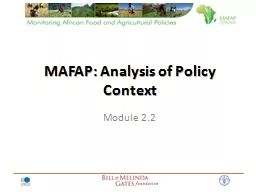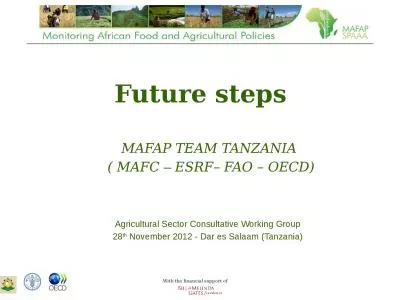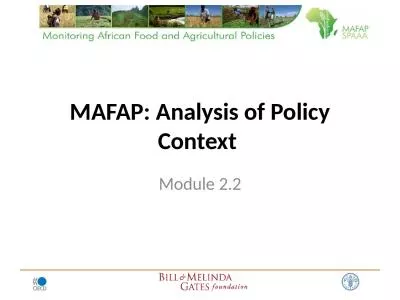PPT-MAFAP:
Author : test | Published Date : 2015-10-05
Analysis of Policy Context Module 22 Commodity Price Analysis and Government Policies Objective To examine commodity market price incentives and analyzeevaluate
Presentation Embed Code
Download Presentation
Download Presentation The PPT/PDF document "MAFAP:" is the property of its rightful owner. Permission is granted to download and print the materials on this website for personal, non-commercial use only, and to display it on your personal computer provided you do not modify the materials and that you retain all copyright notices contained in the materials. By downloading content from our website, you accept the terms of this agreement.
MAFAP:: Transcript
Analysis of Policy Context Module 22 Commodity Price Analysis and Government Policies Objective To examine commodity market price incentives and analyzeevaluate the linkages of government policies including government investment policies to commodity price incentives . 1. Future steps. Agricultural Sector . Consultative Working . Group. 28. th. November 2012 - Dar . es. Salaam (Tanzania). With the financial support of . MAFAP TEAM TANZANIA . ( MAFC . – . ESRF– FAO – OECD). Agricultural Sector . Consultative Working . Group. 28. th. November 2012 - Dar . es. Salaam (Tanzania). With the financial support of . MAFAP TEAM TANZANIA . ( MAFC . – . ESRF– FAO – OECD). Module . 2.2. Commodity Price Analysis and Government Policies. Objective:. To examine commodity market price incentives and analyze/evaluate the linkages of government policies including government investment policies to commodity price incentives. .
Download Document
Here is the link to download the presentation.
"MAFAP:"The content belongs to its owner. You may download and print it for personal use, without modification, and keep all copyright notices. By downloading, you agree to these terms.
Related Documents



